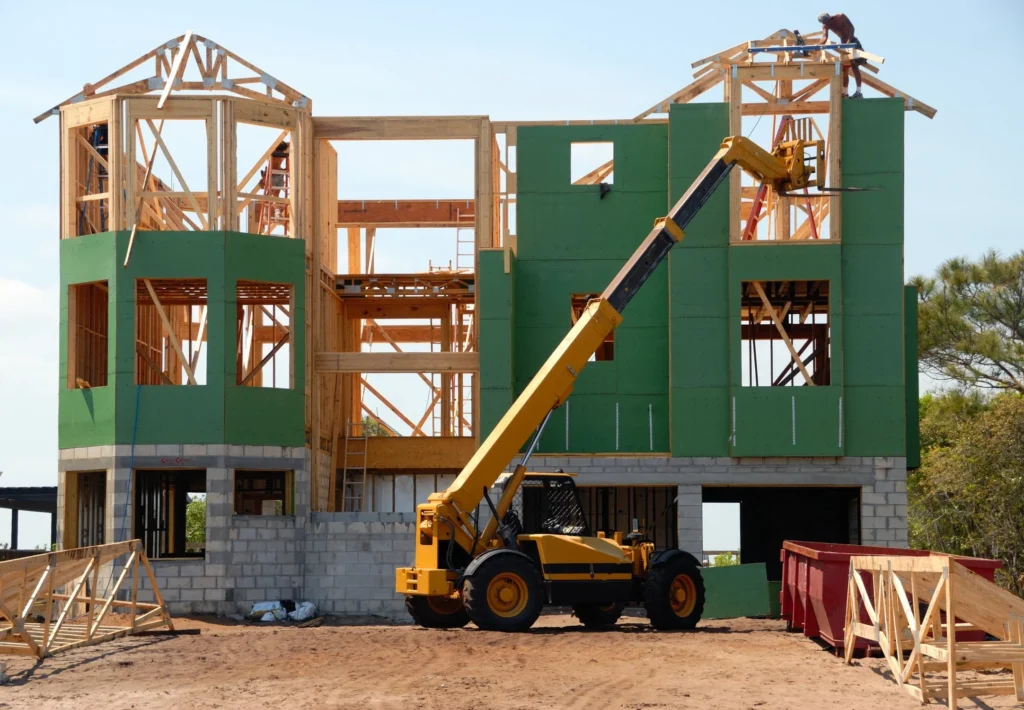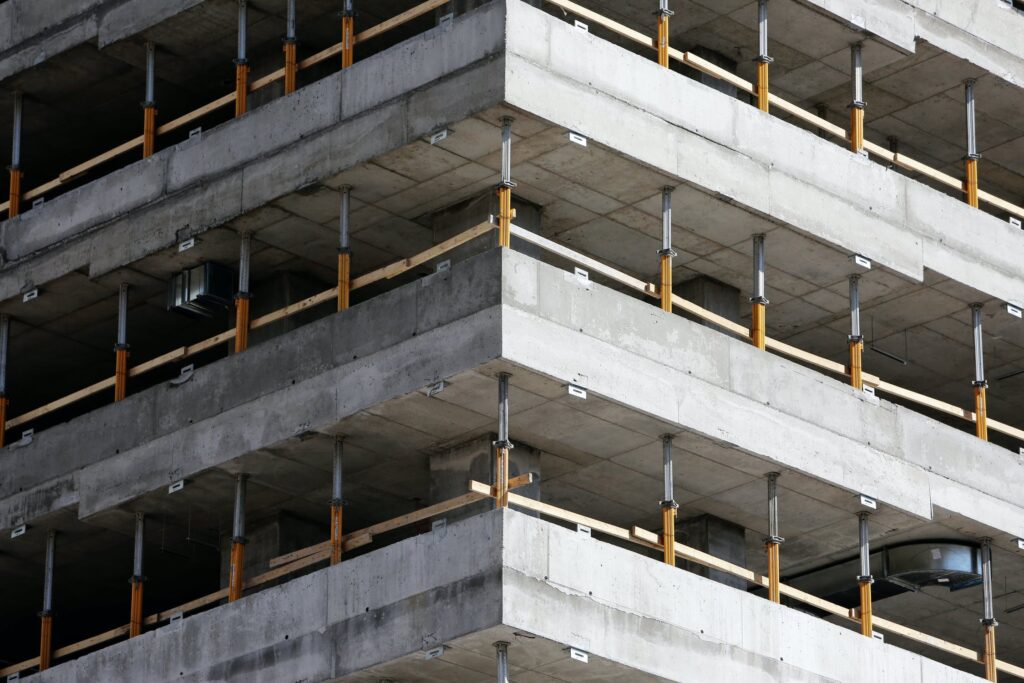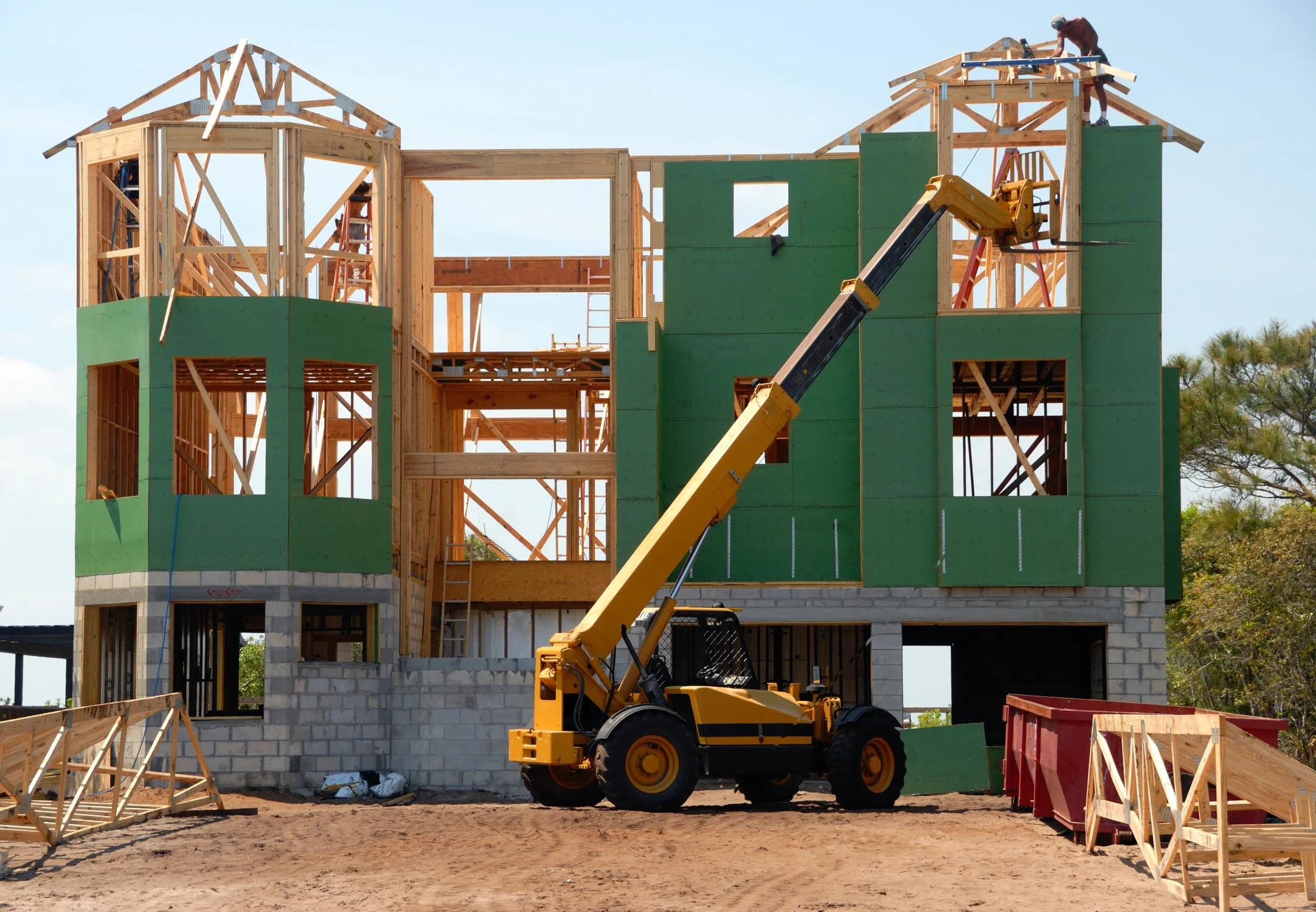The construction industry is an integral part of the global economy. For example, it accounts for 4.1% of total GDP in 2020 in the US alone.
But not all construction projects are the same as they differ by location, scope, and purpose. For example, the three most common types of construction are buildings, infrastructure, and industrial facilities, each requiring specific preparations and expertise for successful completion.
That explains why construction projects have different land and location requirements, construction styles, materials to use, and specifications like fire resistance, use of non-combustible materials, etc.
Read ahead for details on each type of construction and how they differ from one another.

Buildings Construction
This type of construction encompasses both commercial (warehouses and offices) and residential spaces. Let’s explore these in further detail.
Residential
As the name suggests, these buildings are meant for people to inhabit. This category includes everything from single-family homes to apartments, multi-family residences, mobile homes, and condominiums.
A residential project starts when you purchase land then clear and grade it. After that, it’s time to make way for drainage and other intrinsic features, and then the construction begins.
If you plan to hire contractors, they must be on their toes to ensure they build your residential home in the best way possible. In addition, they must always have access to quality workers, have a budget to cover their costs and get their materials at competitive prices.
Here are some of the residential construction types you should look into:
Single Family Homes
These homes are either in the countryside or in well-settled neighborhoods. Since these homes don’t conform to a particular construction style unless the community restricts them, families have the choice to have them constructed the way they want.
However, the only issue is the high maintenance cost that the owner has to bear solely.
Condominiums
Condos are mostly found in cities but are present in small towns as well. These residences come complete with pools, lounge areas, gyms, and other amenities that a single-family home doesn’t provide. So if you are a fan of the luxury life and can afford a condo, go for it. But also know that you might have to pay a housing association fee for living in a high-end neighborhood.
Townhouses
If you prioritize privacy and low maintenance above all other characteristics, then townhouses might be the right choice for you. These are a cross between condos and single-family homes, providing you the expanse of the former with the practicality of the latter. These are more affordable but don’t have the luxurious amenities of a condo.
Multi-Family Homes
Building contractors use these as an investment opportunity to earn extra money by renting out sections to different families. As landlords, they are responsible for the maintenance and upkeep of the buildings. They might even allow multiple generations to live together while maintaining their privacy.

Commercial
This category includes restaurants, hospitals, grocery stores, shopping centers, skyscrapers, sports facilities, universities, private schools, and all other buildings meant for commercial use.
There are three levels of commercial construction projects:
Small Scale
Small commercial construction projects like structure updates, building repairs, and office redesigns all come under this category. It is usually a less costly project, and the general contractor needs to provide minimum personnel.
Business owners looking for open spaces, extensions, or rebranding usually indulge in these types of construction projects.
Medium Scale
Like most other things, buildings lose their flair and start to look old if not maintained regularly. However, these construction projects allow business owners to remodel, expand, restructure, or invest in other time-consuming tasks.
Large Scale
These projects start from scratch as there is no structure to build upon. Instead, the construction crew works with the developer or architect to bring the architect’s vision to life. Large-scale projects are more time-consuming, requiring extensive budgets and new ideas for a seamless building process.
Infrastructure Construction
Also known as civil construction, it includes developing and maintaining public facilities, services, and systems. These projects can be funded by public, private companies, or a collaboration of both.
Here are some examples of this construction type:
- Bridge: This construction overlooks the building and maintenance costs of bridges, including the heavy-trafficked highways that users access daily
- Aviation: These projects focus on the development and maintenance of airports and airplanes
- Communications: It focuses on the wireless, satellite, cable, and other technologies providing connections throughout the nation
- Road: Improves transit through the fixing of roads, streets, and highways
- Railroad: This lies at the core of the transportation system as it oversees the innovation and safety of trains, light rail systems, and subways. It includes steel supplies, tunnels, track layout, and bridges
- Power And Energy: Electrical infrastructure construction oversees projects dealing with power such as power grids, electrical lines, and alternative energy technologies
- Waste: This stores, treats, and eliminates hazardous materials to improve the environment, ensuring sustainable practices for safe water reprocessing and waste disposal
- Water: This infrastructure strives to clean waste from water supplies for safe drinking, making it sustainable
Industrial Construction
This type of construction focuses on offshore construction with energy installations like wind power, oil and gas fields, etc. Additionally, this category includes distilleries, factories, refineries, warehouses, breweries, steel mills, power stations, and large-scale production facilities.
It is a highly specialized construction niche that includes designing, installing, and maintaining structural and mechanical components. As a result, the firms or contractors must possess specific skills and extensive training.
Furthermore, due to the technicality of their work, they often employ several tradespeople spanning across various specialties. These include professionals for every step of the process that works in a team, sharing their knowledge and experiences across several disciplines.
This construction sector requires innovative use of technology due to the rapidly changing industry-building techniques. For instance, building information models (BIM) are increasingly being adopted to allow construction teams to collaborate and improve from the onset of projects.
Consequently, these companies or contractors must have an excellent portfolio and a good track record if they wish to work in this niche. Furthermore, they should have demonstrable experience in several industries, including warehousing, healthcare, corporate, and manufacturing. In addition, such firms must be able to provide solid testimonials and client reviews for their work.
Furthermore, the government is often involved in this niche due to the industrial build’s scope and nature. Their officials overlook projects to accommodate water regulations, fire regulations, and other environmental or land hazards.
Conclusion
The construction industry is vast, with various subgroups to cater to every sector. Whether these are private home projects or public highways, construction is at the core of development and sustenance in an area.
Different types of construction require a unique skill set, expertise, building materials, land space, equipment, labor, and cost. Therefore, you have to know your project inside out to determine its specifications.
Furthermore, ensure that every team member follows all the safety requirements specific to that construction project to avoid project delays due to rejection or correction by building inspectors.
A good construction software makes use of good project management functionality, estimate and financial/accounting tool functionality, job management, scheduling and planning and support functionalities and more. WunderBuild is a construction management software that aims to provide all of these functionalities and more to bring out the best outcomes for a project.
It is currently offering a free trial, visit here to try WunderBuild for free.




